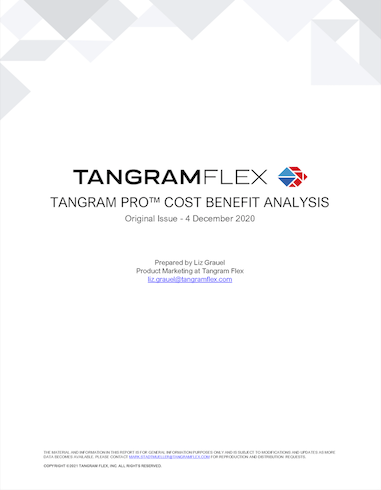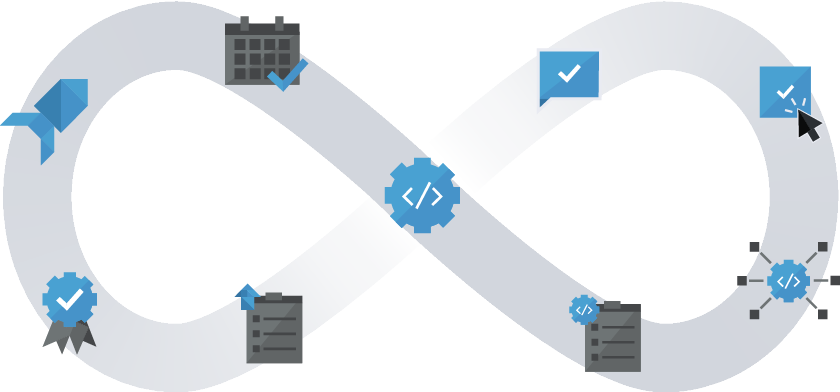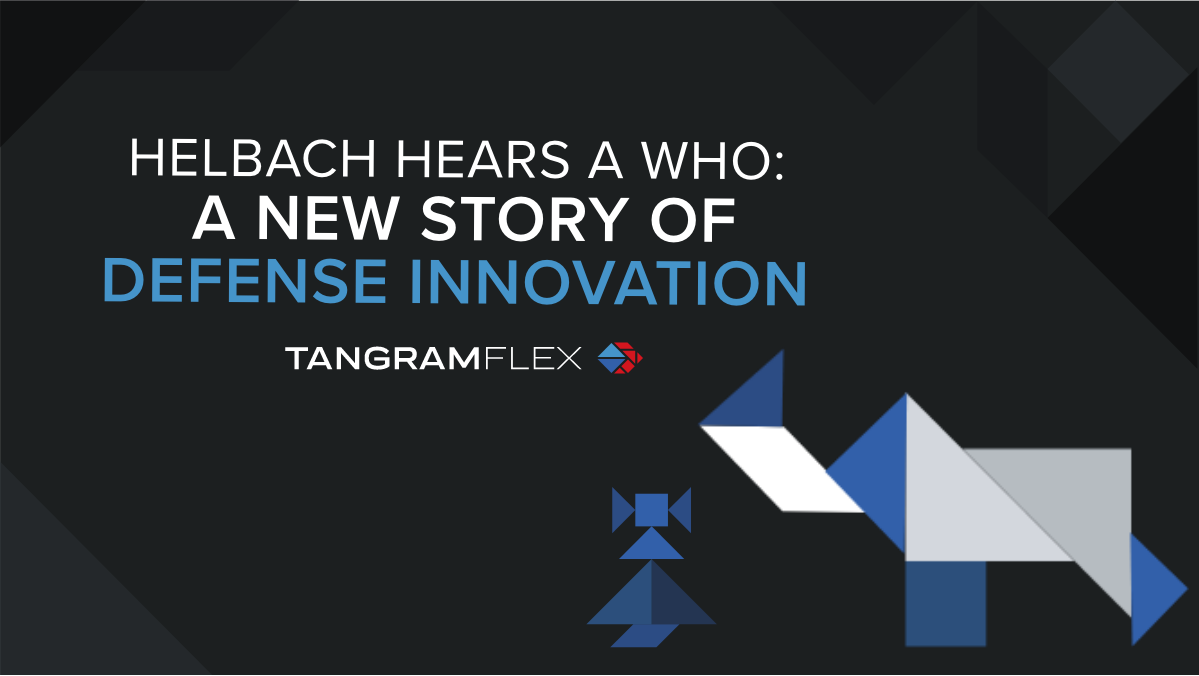Tangram Flex is excited to continue the multi-part series about bridging the treacherous gap in...
The Business Case for Component Software Integration Platforms (CSIP)
Tangram Flex is excited to continue this multi-part series about bridging the treacherous gap in engineering.
In this edition, Liz Grauel, leader of Product Marketing at Tangram Flex, shares her insights about the benefits of adopting a CSIP in programs that support mission-critical systems. Liz combines her graduate education in economics with a decade of experience in building software product and quality programs to understand market needs and deliver value to users and customers.

The titles, headlines, and quotes are easy to find: Software is never done. Software development is broken. Software is everywhere. It seems that we live in a world obsessed with, desirous of, and mystified by software all at once. Across industries and nations the message is clear: the only route to gaining a technology advantage, and thus a market advantage and a mission advantage, is through advanced software capabilities. Simple, right?
Complexity in systems isn’t a new topic for engineers. Component and model based systems engineering has evolved to become the de facto standard for good practice in building and maintaining systems. Component based engineering (CBE) looks at systems as a set of individual components with defined behavior and interfaces, the goal of which is to swap components in and out of the system more easily. Model based systems engineering (MBSE) is a natural complement here: using system models allows engineers to understand how all the components work together and map it to requirements and design.
These methodologies are a strong foundation for modern engineering. Today’s systems are galaxies of hardware from the last century orbited and entangled with a mix of aging and new, sophisticated software. The growing capabilities of software components introduce opportunities and obstacles across industries, demanding a shift to CBE and MBSE across the board.
Even as adoption of CBE and MBSE grows and we improve at understanding what’s driving our systems, we continue to stumble through failures in communication, missed requirements, incomplete handoffs between design, development, and test, and failures in software delivery within the engineering lifecycle. This is what we at Tangram Flex call the Treacherous Gap.
Bridging the Treacherous Gap
After conducting deep industry research, we published a report analyzing the costs and benefits of bridging the treacherous gap in engineering with our Component Software Integration Platform (CSIP), Tangram Pro™, focused on four key benefits to customers:
- Lower overall cost of component-based program execution
- Efficiencies in testing, verification, and certification
- Faster software delivery and release cadence
- Eased transition to agile software development & DevSecOps adoption
Our cost benefit analysis uses a model organization engaged in a notional Major Defense Acquisition Programs (MDAP) program as our customer. The model organization is based on a business unit of a mid-sized prime contractor to the DoD that develops and integrates components in connected defense systems and follows an industry-standard development lifecycle. For a team of 20 contractors in engineering roles with an annual budget of $23 million for mission system engineering, our analysis projected a benefit of $27.9 million over 5 years with adoption of the Tangram Pro™ CSIP, representing 24% of the model program’s budget.
The full report with financial analysis and data methodology is available for download on our website.

Lower Overall Cost of Program Execution
Programs that have already adopted CBE are well positioned to repair the missing links between systems engineering and software development with a CSIP. Tangram Pro™ provides quantifiable cost savings in three categories:
- Reduced Engineering Effort: Tangram Pro™ automatically generates software interfaces for connecting components together, reducing the engineering effort needed to write integration code by hand
- Integrated Assurance: Static analysis and built in assurance tools bridge the gaps between software development and shift testing to the left, reducing the number of errors that escape to the V&V phase and the costs associated with traditional test activities
- Component Reuse: Built-in component library management and configuration tools reduce overhead costs and provide faster routes to reusing components in new ways
CSIPs reduce communication and tool gaps, which is key to ensuring that programs can achieve financial, schedule, and technical objectives. Additional benefits discussed in the report include vendor flexibility, improvements to interoperability, and increased confidence and traceability with the use of Tangram Pro™.
Testing, Verification, and Certification Efficiencies
Up to 80% of program schedules are devoted to testing, verification, and certification of software– practices that typically fall late in the program schedule. Pairing CBE practices with a CSIP gives engineering teams simple paths to shifting testing to the left. The built-in assurance features of Tangram Pro™ provide key analysis and evidence generating tools that help programs deliver with higher quality and a measurable reduction in defects, time, and costs with two key measurable benefits:
- Early Defect Detection: Integrated assurance tools identify defects and errors earlier in the development cycle where they are cheaper, faster, and easier to fix. Fewer defects escape to production, leading to higher quality deliveries.
- Improved Cybersecurity: Over 60% of software security vulnerabilities are introduced by coding errors and are expensive and difficult to detect during testing. Tangram Pro™ includes code analysis tools that identify vulnerabilities at their source, before deployment.
Missing links between system engineering and software development lead to a lack of trust in changes and modifications and create a burden to testing, verification, and certification, and adopting a CSIP provides more than just the financial benefits above. Automated change management, access to advanced assurance tools, and automatically generated documentation support the flow of information between lifecycle stages and create confidence and transparency in system design and software development, even in diverse and distant teams. This is a critical change with sustained benefits to organizations who embrace it.

Faster Software Delivery and Release Cadence
Today’s missions demand a technology advantage through advanced software capabilities, and people on the field need system updates faster and more frequently. Our customers are using Tangram Pro™ to improve discipline in their engineering lifecycles without sacrificing schedule or quality– shortening the time to field new technologies and the cost of designing and producing them:
- Faster Production Time: The Tangram Pro™ CSIP enables teams to use digital twin technologies, which can improve cycle time by 30%. Visualizing systems at the component level and building connections between the system and its components while maintaining high-quality traceability between design and development reduces the time to deliver software to the field and the cost to do so.
- Model Based Systems Engineering: MBSE is a natural complement to CBE. It uses system models to understand the system’s requirements, design, and architecture by describing its components, their interfaces, and their behavior, enabling faster and less costly delivery of systems and components. Tangram Pro™ customers can connect their models to code and dramatically reduce delivery time for system updates.
Tightly linking software development with systems engineering is critical to delivering at the speed of relevance. Adopting a CSIP greatly reduces the timeline to release new components, providing financial benefits to the program and organization, as well as critical safety benefits to the system’s end users. Not only does a CSIP help the engineering team deliver faster, it also shortens the threat mitigation windows for people on the ground by enabling engineering teams to detect, repair, and deploy error solutions faster and more securely.
Transition to Agile Development and DevSecOps
Our industry has a shared goal: to deliver powerful, high quality, and meaningful technology quickly, securely, safely, and continuously. Tangram Flex is dedicated to helping our customers advance their engineering lifecycles and our CSIP is designed specifically for organizations who want to embrace the digital trinity of agile software development, modular open-systems architecture, and digital engineering.
Tangram Pro™ allows all members of a program to use a shared model as the single source of truth and to access well defined components, creating confidence and transparency in system design and software development even in diverse and distant teams. It integrates with existing code repositories and DevOps pipelines to allow sharing of resources while creating confidence and transparency in system design and software development. Agile development and DevSecOps are natural partners, and Tangram Pro™ provides flexibility and integration features that help teams fully realize the benefits of CBE.
Realizing the Value
Maybe you are a director of technology looking to mature and advance your company’s products and business, a program manager who needs to improve cost and schedule, or an engineer who wants better ways to design and implement components. We all share the same problem:
There are missing links between system engineering and software development which create difficulties in implementing mission standards and transformations in code, a lack of trust in changes and modifications, and lead to difficult, slow software delivery.
A CSIP helps to repair the missing links between system engineering and software development so new technology can be delivered to the field rapidly with high levels of confidence. Visit our website to learn more about Tangram Pro™ and how it can benefit your program, and reach out to us to talk about how we can work together.

Tangram Flex simplifies software integration for mission-critical defense systems. Every system is unique, but the mission is clear: the people on the ground need dependable, adaptable equipment to get the job done. At Tangram Flex, we understand the challenges of security, speed, and safety. Our team combines engineering expertise with our Component Software Integration Platform (CSIP), Tangram Pro™, to arm engineers with customized toolkits for meeting mission needs.
Tangram Flex is headquartered in Dayton, Ohio. Our staff has experience from DoD, Fortune 500 companies, and innovative software startups. We are dedicated to walking alongside our customers to keep pace with changes in technology. Get in touch: hello@tangramflex.com.






